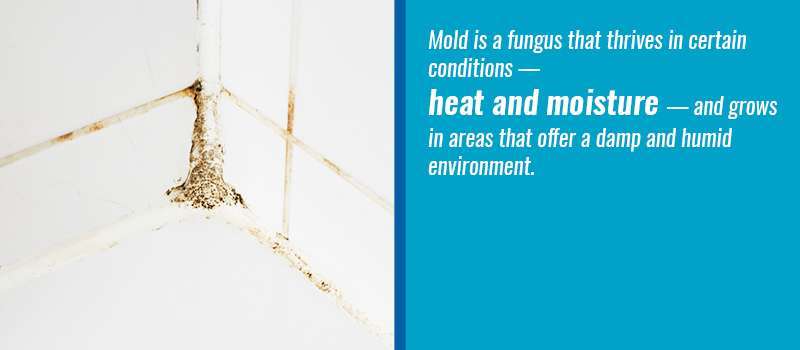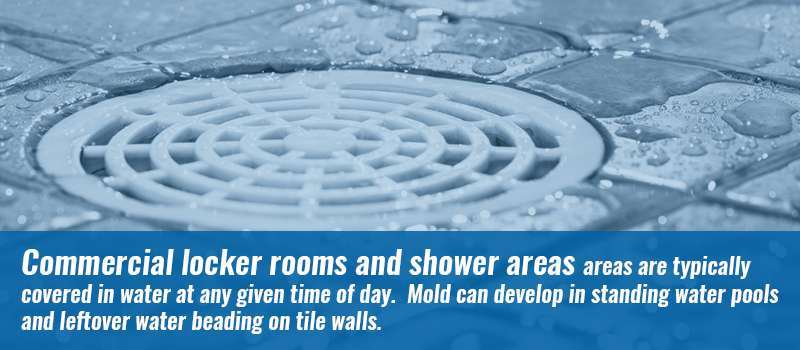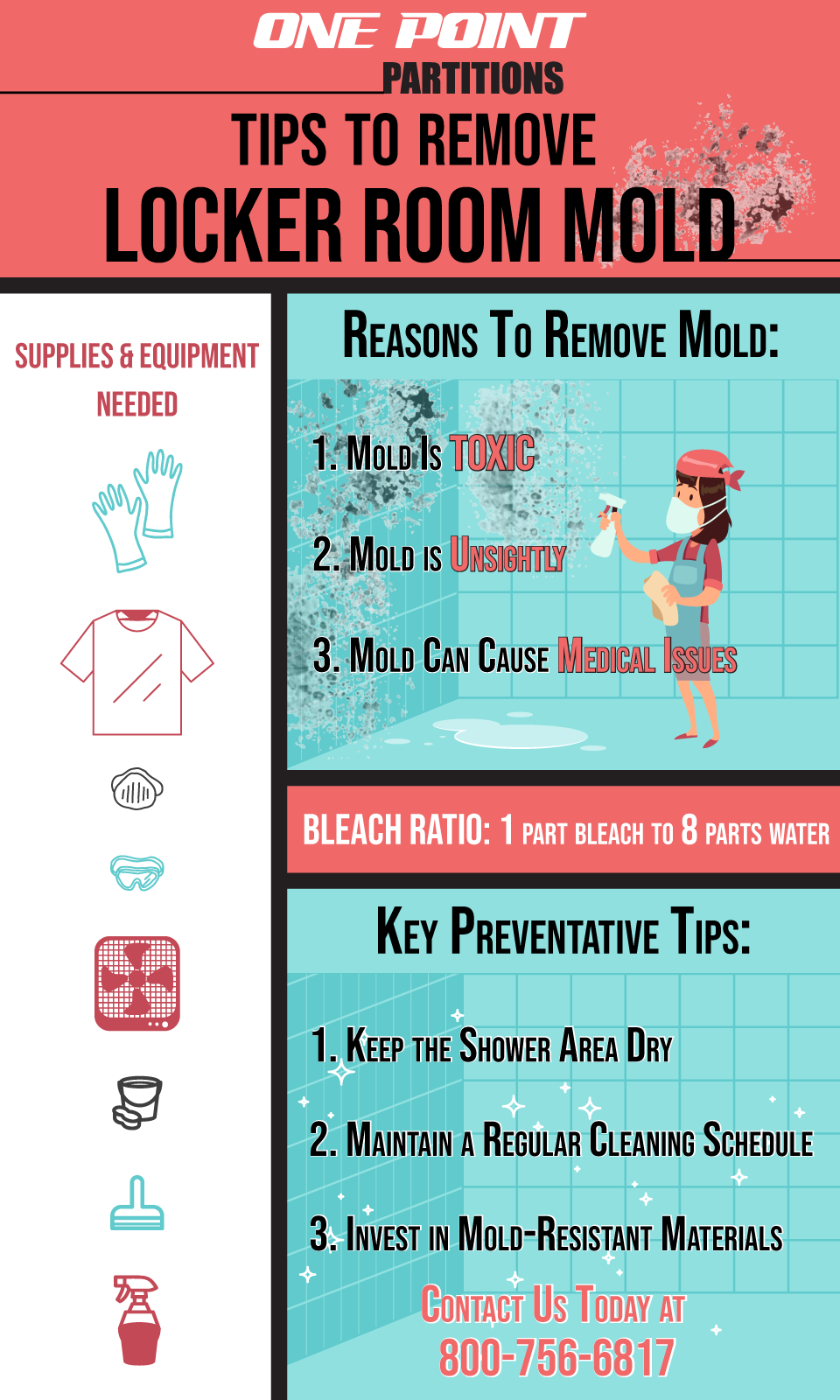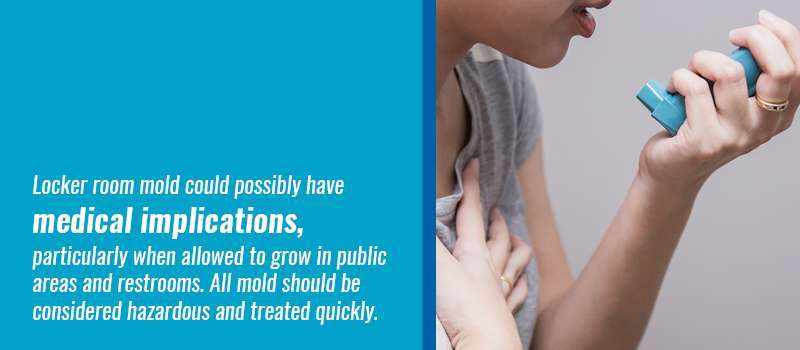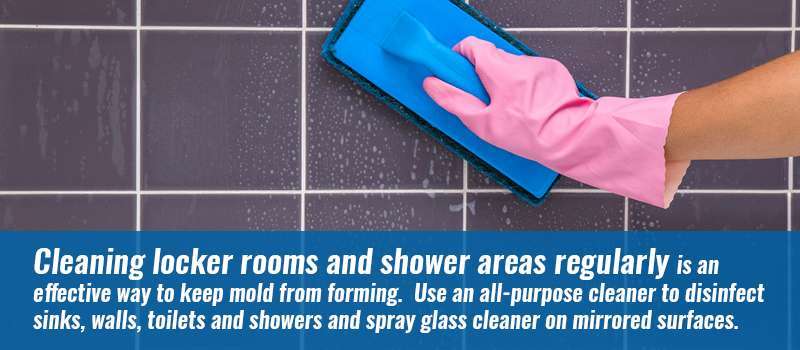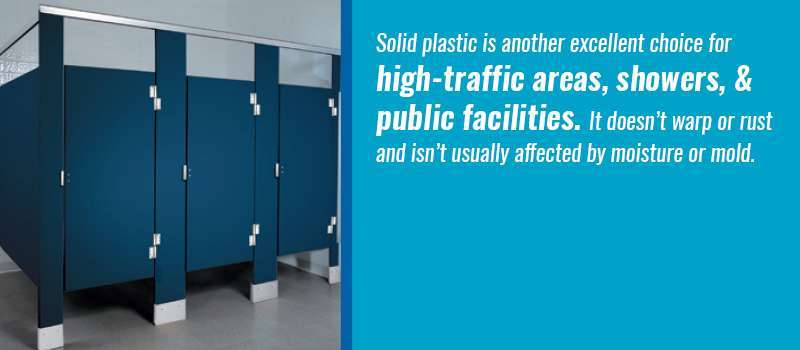How to Remove Mold From Locker Room Showers
Mold is a fungus that thrives in certain conditions — namely heat and moisture — and grows in areas that offer a damp and humid environment. Mold spores can be blown inside buildings by wind or tracked inside on shoes, clothing or other means. They can sit dormant without causing any problems, but they can also wreak havoc in certain conditions, eroding tile and grout, causing illness and turning even the most updated bathroom into an eyesore.
Many commercial building owners deal with mold in their bathroom or shower area. Places like gyms, indoor swimming pools and locker rooms can be a breeding ground for unpleasant bacteria due to the amount of traffic and use they sustain. Tracking germs from outside is just as common, if not more common, in these high-traffic locations where all sorts of people gather.
How Dangerous Is Mold?
There are several distinct types of mold, some of which are considered toxic. Mold that is green in color is generally considered less harmful than black mold. However, all mold can be dangerous if it’s not treated properly.
Even the most benign types can cause breathing issues when left to propagate, due to the production of mycotoxins, or the chemicals fungi often produce.
How Do You Get Mold?
Contrary to widespread belief, mold is not an indicator of an unclean space. In some cases, mold can be prevented, but since it flourishes in wet, hot environments, it’s normal to battle mold in a shower area occasionally. Several factors may lead to mold accumulation — here are five.
1. Poor Ventilation
Poor ventilation is a major contributing factor to mold accumulation. Steam and water from the shower can be trapped for extended periods of time, creating the ideal environment for mold to form. Since restrooms usually don’t have windows or other ways to let in fresh air, the moisture in the air has no place to go and instead clings to bathroom rugs, cleaning brushes and other surfaces. Over time, these damp places become a breeding ground for mold.
2. Humidity
Humidity is a measure of the amount of moisture in the air. Since mold needs to live in warm, wet areas, locations with increased humidity are more prone to deal with mold issues. Set your air conditioning lower than normal or invest in a few dehumidifiers if your building is susceptible to especially humid conditions.
3. Moist or Wet Surfaces With Standing Water
Commercial locker rooms and shower areas are typically covered in water at any given time of day — especially those that are used several times per day. Mold can develop in standing water pools and leftover water beading on tile walls.
4. Dirt and Dust Build-Up
Although mold isn’t an indicator that a space is dirty, it does grow in dirty, dusty places. Dust and dirt are major contributors to mold, especially in less expected places, like the ceiling. If moisture is trapped in a shower area and clings to some dirt in the ceiling, mold will likely grow in that spot. It can then spread to other hard-to-reach places, like inside walls and underneath tiles or broken grout.
5. Clothes, Towels or Absorbent Mats That Hold Moisture
Because public showers and locker rooms tend to stay wet for extended periods of time, they’re common places where mold is discovered. Some mold forms due to the moisture in and under bathroom mats, or even because of damp cleaning supplies, towels and clothing that is kept in these moist areas.
What Do You Need To Get Rid Of Mold On Locker Room Showers?
Removing mold from locker room showers can be a health hazard, so it’s important to dispose of the mold in a safe way using proper gear. Some items recommended for the cleaning of mold and safeguarding are:
- Rubber Gloves: To protect the hands and arms
- Old Clothing: To cover as much of the skin as possible and throw away after you’re done cleaning
- Paper Face Mask: To protect the mouth and nose and prevent breathing in mold spores or bleach fumes
- Goggles: To protect the eyes
- Box Fan: To ventilate the area and eliminate excess moisture
- Cleaning Tools: To scrub and sanitize the affected places
- Screwdriver or Scraper: To assist with cleaning mold from grout and tile
- Mold Spray or Natural Cleaning Items: To rid the area of all signs of mold
Of course, there are some alternative methods to cleaning mold using household items, and these offer varying degrees of success. In some cases, getting rid of mold may be more difficult, and it may be beneficial to call an expert to treat the mold and make sure it’s completely eradicated.
Why Is It Important to Get Rid of Mold?
Locker room mold is unsightly at best, and at worst, could possibly have medical implications, particularly when allowed to grow in public areas and restrooms. According to the CDC, mold has been linked to a variety of health issues, including respiratory illness, asthma and lethargy in children who are otherwise considered healthy. All mold should be considered hazardous and treated as quickly as possible, whether it’s found indoors or outdoors.
So far, we know for certain mold can cause respiratory infections and fungal allergies, but no conclusive research has been done to confirm mold is linked with several other health issues, such as memory loss, lack of energy and pulmonary hemorrhage. The CDC and other federal agencies are working to improve the public’s understanding of mold, how it develops and how we can prevent it.
In severe situations, the presence of certain types of mold can lead to grave consequences. Some people are more sensitive to mold than others, especially those with weakened immune systems, such as:
- Pregnant women
- Children
- The elderly
- People receiving cancer treatment
- People taking medications that suppress the immune system
- People who have had a stem cell or organ transplant
To keep these groups of people — and everyone else — safe while they’re using your commercial facility, it’s your responsibility to ensure it’s free of mold infestation.
Not only can mold cause worse reactions in people with weakened immune systems, but it can also wreak havoc on people with allergies or asthma. They may experience more intensified side effects, such as sneezing, wheezing, a stuffy nose and red or itchy eyes or skin. It’s important to also mention that people without preexisting respiratory issues or allergies could develop asthma or other conditions due to exposure to mold — just one more reason to keep your facility mold-free.
How to Remove Locker Room Shower Mold
The most effective way to remove mold from locker rooms is to kill it completely with bleach. Mix bleach with water at a 1:8 ratio in a spray bottle to make clean-up easy, convenient and safe. Mold spores can become airborne, and using a bottle with spray spout can prevent the inhalation of mold. Use a strong scrubber or brush to scour the mold from surfaces and grout, then rinse with water.
Another method for removing mold involves ordinary items you may find lying around your facility, depending on what kind of commercial setting you work in. If you don’t, they’re all easy to purchase at any grocery store. For example, vinegar is a mild acid that can kill some species of mold. Baking soda is often used in conjunction with vinegar because it absorbs odors and moisture, and it also helps to break up dirt and grime on tile and in the grout. Hydrogen peroxide and tea tree oil have also been touted as having anti-bacterial and mold-repellent properties.
Tips for Preventing Shower Mold
Once you’ve dealt with mold, we can guarantee you’ll want to stop it from ever happening again. Here are a few tips to keep your commercial locker room mold-free:
- Keep the Shower Area Dry: Mold blooms in moist places, so keeping the shower area dry is a good first step to preventing the formation of mold. Encourage your guests to use a towel or squeegee to mop up extra moisture after showering.
- Reduce Moisture in the Air: If the restroom area has a fan, turn it on during the day to get rid of excess moisture in the air. Alternatively, you could set up a box fan for when the showers aren’t in use to control the amount of moisture that lingers. Keeping the air conditioner set at a low temperature to control humidity is also helpful, as it will help to diminish the amount of moisture in the air and on shower walls and floors.
- Remove Items From the Shower Area: Collect any leftover shower accoutrements such as loofahs, shampoo bottles and razors at the end of each day. Items like this are magnets for bacteria and can easily grow mold. They also contribute to the spread of mold and germs when left to sit for extended periods of time. Allow sponges and other shower items to dry on a towel or rack, then assign a clean, dry place for your guests to store their personal items.
- Maintain a Regular Cleaning Schedule: Cleaning locker rooms and shower areas regularly is another effective way to keep mold from forming. Since mold clings to dust and dirt particles, dusting restroom and shower areas can be beneficial. Use an all-purpose cleaner to disinfect sinks, walls, toilets and showers and spray glass cleaner on mirrored surfaces. If there are any curtains, towels or rugs in the area, you should wash them regularly, as well.
- Stay on Top of Repairs: Fixing leaks in bathroom areas and around any drains and faucets is an effective way to keep mold from happening. Checking for loose or weak pipes and leaky faucets will ensure moisture doesn’t pool on shower floors and that running water is able to drain properly.
- Invest in Mold-Resistant Materials: One of the smartest ways to prevent mold from forming in locker rooms is to use mold-resistant materials during building and preparation. Using mold-resistant paint on the walls can be effective, as well as using partitions made of mold-resistant ingredients. At One Point Partition, we offer mold-resistant partitions with competitive prices and standard warranties.
Mold-Resistant Partitions From One Point Partition
After you’ve gotten rid of your mold, consider using partitions in the bathroom and shower area. Dividers like these are great for privacy, and they also help to prevent the spread of mold and other locker room germs. Partitions split the larger locker room area into smaller restricted areas that offer privacy and can be more manageable when it comes to clean-up and safeguarding against mold.
At One Point Partition, our American-made partitions are available in five unique materials that are both functional and attractive. Each option is also available in a wide variety of colors to suit any need. Available materials include:
- Powder-Coated Steel: This material is great for commercial or industrial spaces. Durable and resistant to chipping, scratching and fading, this is an appropriate choice for a commercial bathroom or shower that gets heavy traffic, such as in a gym or school. Powder-coated steel is easy to maintain and clean with warm soapy water.
- Stainless Steel: Stainless steel offers a more sophisticated look and, like powder-coated steel, is very durable. It is heavier and sturdier than other materials, and it’s also easy to clean.
- Laminate: Laminate is a cost-effective option that’s visually appealing and made of light material. It can be sensitive to moisture and humidity and is more lightweight than the other options, which makes it well-suited for public areas like bars and restaurants.
- Phenolic: This material is crafted from thin layers of resin. Phenolic partitions are resistant to water and most bacteria, making them a smart choice for bathrooms, indoor swimming facilities and locker room areas.
- Solid Plastic: Solid plastic is another excellent choice for high-traffic areas, public facilities and showers. It doesn’t warp or rust and isn’t usually affected by moisture or mold.
Choose One Point Partition as Your Source for Mold-Resistant Materials
One Point Partition’s staff of knowledgeable and experienced partition experts is prepared to answer any of your questions. We work with partition and design needs across a wide spectrum of industries and have experience with new installation, remodel and even partition replacements in older restrooms. To ensure you’re getting the best service, we match each of our customers with a partition expert who will assist with getting a quote, designing layouts, ordering the right materials and the delivery and installation of the partitions.
All our partitions are made in America, and we are backed by one of the largest partition manufacturers in the country. Our products are ADA- and handicap-compliant, and we offer free samples of the materials in a variety of colors to help our customers find the perfect fit for any space.
Consultations with a One Point Partitions team member are completely free — including design mock-ups and custom design recommendations. Contact us today to schedule yours!

